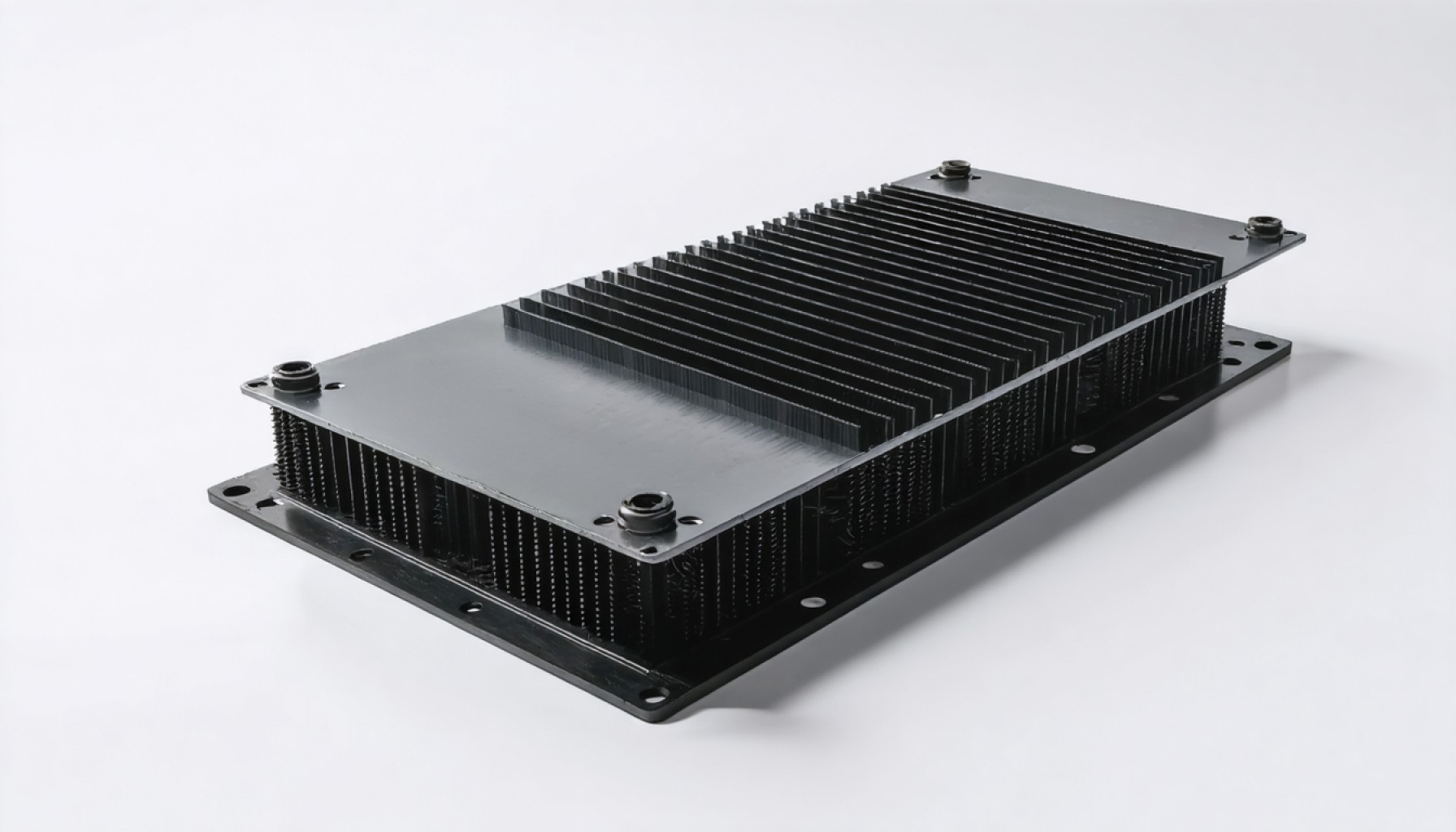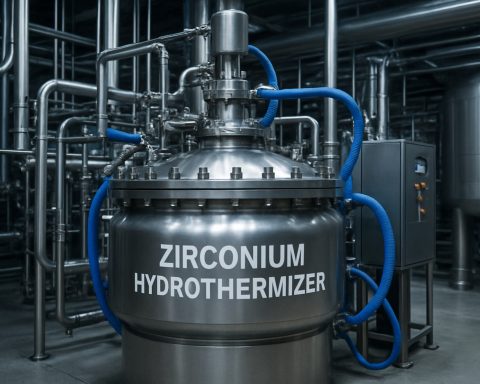- Battery cooling plates are crucial for optimal performance and safety of electric vehicles (EVs).
- With increased EV adoption, demand for effective thermal management grows, driven by higher battery capacities and ultra-fast charging technologies.
- The EV battery cooling plate market is projected to grow from $3.1 billion in 2024 to $11.9 billion by 2031, at a CAGR of 21.2%.
- The passenger car sector is expected to dominate, capturing 72.5% of the market by 2024.
- Asia-Pacific leads the growth with a 24.6% CAGR, spearheaded by China’s advancements and policies.
- Technological innovations like AI, IoT, and immersion cooling are enhancing efficiency and safety.
- Despite challenges such as high costs, opportunities abound in commercial EVs and public infrastructure.
- The evolution of battery cooling technologies is key to supporting the shift towards a sustainable electric future.
Amidst the hum of electric motors quietly redefining our roads, a less visible breakthrough hums in the background—the evolution of battery cooling plates. With electric vehicles (EVs) rapidly becoming a key piece of our sustainable future, the quiet rise of these thermal management systems is set to play a crucial role in their continued performance and safety.
As the globe pivots toward electrification, the demand for effective thermal management solutions surges alongside EV adoption rates. The urgency is underscored by the surge in battery capacities and the relentless advance of ultra-fast charging infrastructures. Cooling plates for batteries, often invisible and unglamorous, become the unsung heroes of this transformation, maintaining optimal battery performance and safety by efficiently dissipating heat generated during high-power operations.
Riding this momentum, the EV battery cooling plate market is experiencing a remarkable trajectory. From a valuation of $3.1 billion projected in 2024, it is expected to skyrocket to $11.9 billion by 2031, with a robust compound annual growth rate (CAGR) of 21.2%. The passenger car sector, alone poised to capture 72.5% of the market by 2024, underscores the sweeping demand.
While Asia-Pacific steers this trend with a staggering 24.6% CAGR, driven by proactive government policies and massive investments in electric infrastructure, the globe follows suit. Here, China emerges as the avant-garde, spearheading developments and refining technologies to meet its ambitious emission goals and fortify its position at the forefront of the EV revolution.
Beyond geographic opportunities, the technological landscape of cooling plates is evolving. Leveraging innovations like AI and IoT, these systems promise real-time battery temperature monitoring, further optimizing efficiency and enhancing safety. Such advancements are imperative as the industry embraces ultra-fast charging capabilities—scenarios where even minor gains in thermal performance could translate into significant benefits.
Forward-thinking manufacturers are venturing into new territories. This includes introducing immersion cooling, a state-of-the-art method that submerges batteries in non-conductive fluids for superior heat management. These dynamic systems are especially appealing for electric buses and trucks, which demand robust solutions to accommodate their colossal battery loads.
However, challenges remain. Despite their advantages, advanced cooling technologies can be costly. Sophisticated materials like graphene promise improved efficiency and reduced weight, but their premium cost could inhibit widespread deployment, particularly among entry-level EVs.
Yet, the vast opportunities within the burgeoning commercial EV sector and the undeniable push towards sustainable public infrastructure provide fertile ground for entrepreneurship and innovation. Herein lies the heart of the transformation: the ability of the market to adapt, innovate, and ultimately reframe the prospects for electric vehicles globally.
The takeaway? As EVs continue to redefine the automotive landscape, battery cooling plates will be indispensable in steering us safely into a future dominated by electric propulsion. With adaptability and innovation at its core, this market seamlessly intertwines with the broader aspirations of a sustainable global economy—forever changing the way we move.
Revolutionizing EV Performance: The Crucial Role of Battery Cooling Plates
Exploring the Hidden Backbone of the Electric Vehicle Revolution
As electric vehicles (EVs) swiftly transform the automotive landscape, a critical but often overlooked component is charging their evolution—battery cooling plates. These thermal management systems are key to enhancing EV performance, safety, and longevity by efficiently dissipating heat generated during high-power operations.
Understanding Thermal Management Challenges
The surge in EV adoption highlights the need for robust thermal management solutions to handle increasing battery capacities and ultra-fast charging infrastructures. Effective cooling is crucial to maintaining optimal battery performance and safety—a critical factor as the industry moves toward a sustainable future.
Market Forecasts and Industry Trends
The EV battery cooling plate market is on an explosive growth trajectory. From a projected valuation of $3.1 billion in 2024, it is expected to soar to $11.9 billion by 2031, demonstrating a strong compound annual growth rate (CAGR) of 21.2%. The passenger car sector alone is anticipated to capture 72.5% of this market by 2024, indicating significant demand.
– Asia-Pacific Leadership: With a remarkable 24.6% CAGR, the Asia-Pacific region—led by China—dominates the market, benefiting from proactive government policies and massive investments in electric infrastructure. Intense focus on emission goals drives innovation and technological refinements.
– Technological Innovation: Advances in AI and IoT enable real-time battery temperature monitoring, optimizing efficiency and safety. This technological evolution is critical as the industry embraces ultra-fast charging capabilities, where thermal performance improvements can yield substantial benefits.
Advantages and Innovations in Cooling Technology
Manufacturers are exploring state-of-the-art cooling methods to keep up with industry demands. Innovations such as immersion cooling, which submerges batteries in non-conductive fluids, offer superior heat management—particularly appealing for electric buses and trucks with substantial battery loads.
Challenges and Limitations
Notwithstanding their advantages, advanced cooling technologies are costly. Premium materials like graphene offer improved efficiency and reduced weight but may limit widespread deployment among entry-level EVs due to their high cost.
Practical Tips for Consumers:
– Prioritize Cooling Efficiency: When selecting an EV, consider models equipped with advanced cooling technology to ensure longevity and performance.
– Stay Informed About Innovations: Growing trends in AI and IoT can greatly improve EV battery management—stay updated on manufacturers adopting these technologies.
Key Takeaways
As EVs reshape the automotive landscape, battery cooling plates emerge as essential players in guiding us toward an electric-driven future. By prioritizing adaptability and innovation, this market aligns with broader global sustainability goals, altering how we perceive transportation.
Extra Insights
– Life Hacks for EV Owners: Regular software updates can enhance your vehicle’s thermal management systems, complementing the physical cooling setup for optimal battery health.
– Real-World Use Case: Tesla’s integrated vehicle heat pump system showcases an effective blend of heating and cooling technologies, optimizing battery performance across diverse climates.
Conclusion
In facing challenges and opportunities within the evolving EV landscape, the contributions of cooling plates underscore the importance of innovation and ecological foresight. Navigating the dynamic market requires producers and consumers to embrace advancements, ensuring a sustainable and electric future for transportation.
For the latest insights and technologies related to electric vehicles, visit Tesla or Nissan for more information.













